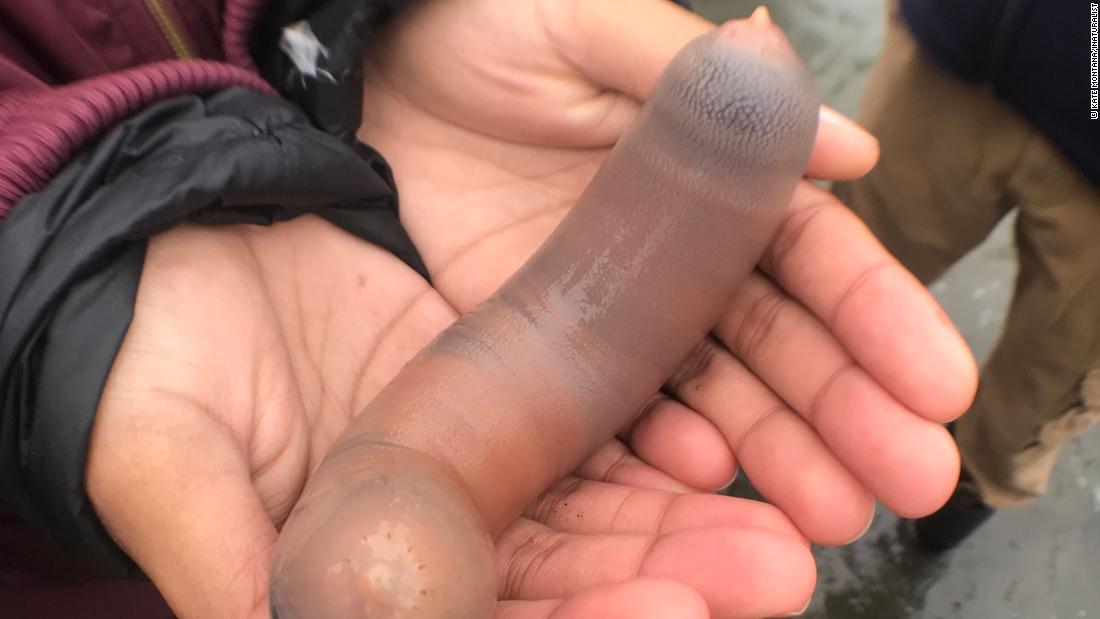[ad_1]

Wildlife enthusiast David Ford captured the foreboding scene, which looks as though a plane full of frankfurters flung open the hatch and let the dogs rain down upon the unassuming shore.
They are not franks but fat innkeeper worms, almost as old as the wet sand in which they burrow. And their appearance was rare: The stranding Ford stumbled into might’ve been one of the few times they’d ever left the ground in their adult lives, biologist Ivan Parr told CNN.
The deal with these strange creatures
The bulbous worms can live their entire lives underground, holed up in u-shaped burrows beneath the wet sand along the California coast.
Colloquially known as “penis fish” among biologists and dilettantes for its phallic shape, the innkeeper worm earned their proper name for temporarily housing smaller creatures in their burrows, with little conflict.
Pea crabs, clams and the tiny arrow goby fish share space with the worm and eat the food it discards, though there’s little in it for the worm.
There’s no need for fat innkeeper worms to come up to the surface, where otters, gulls and humans (they’re a salty, South Korean delicacy) could prey on them, when they can cast a mucousy net to catch food and reproduce from the comfort of their burrows.
That’s unless, of course, a storm strikes.
“We’re seeing the risk of building your home out of sand,” Parr wrote in Bay Nature. “Strong storms — especially during El Niño years — are perfectly capable of laying siege to the intertidal zone, breaking apart the sediment, and leaving their contents stranded on the shore.”
The other two previous mass strandings in 2010 and 2016 hit during El Niño weather events, characterized by warmer-than-average waters that routinely bring with them more rain to California.
Do the strandings hurt them?
Biologists don’t know.
The resilient worms are ancient creatures, their burrows dating back some 300 million years, Parr said, and one of the oldest worms ever found was believed to be 25 years old.
But because they live primarily underground, the innkeeper worms are difficult to quantify, he said. The impacts of strandings on their populations will likely stay hidden as long as the worms do.
[ad_2]
Source link

